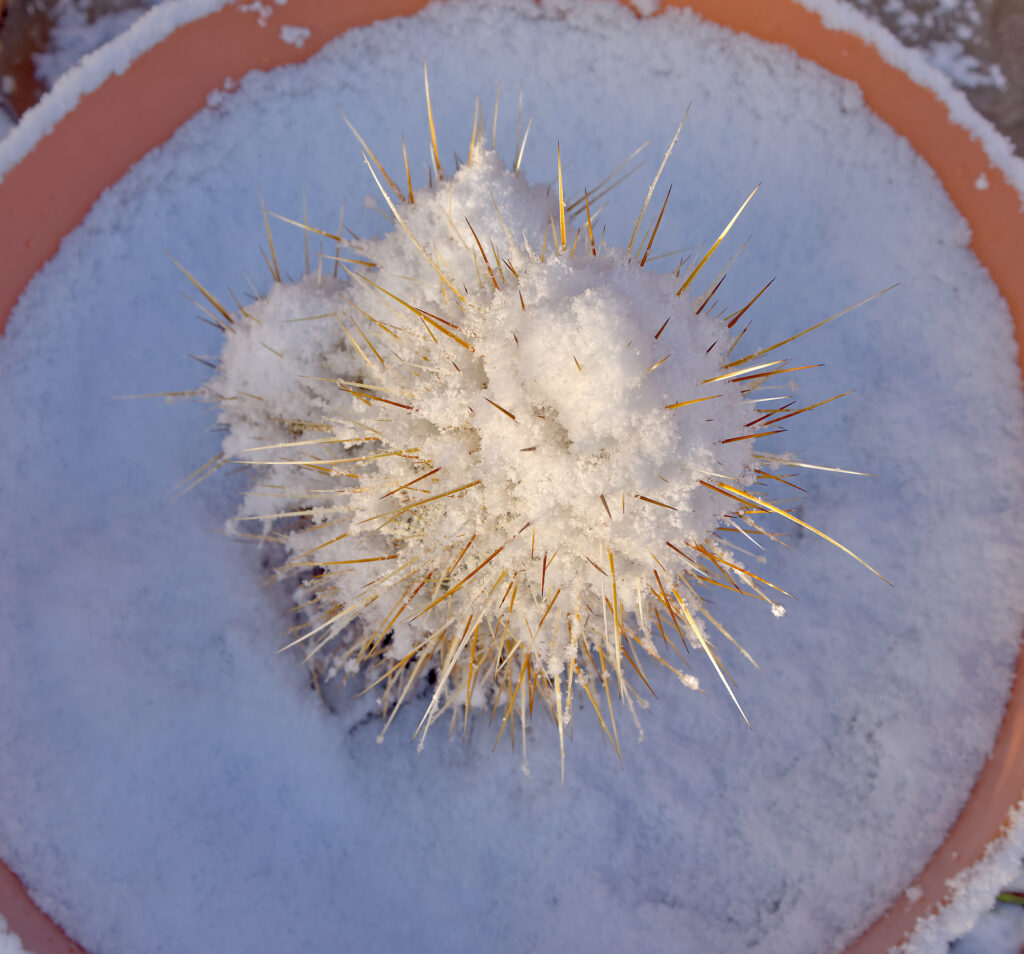Echinocereus is a low-growing cactus genus that bears showy flowers. Echinocereus produces free-branching clusters or mounds of erect stems, sometimes prostrate, and usually less than a foot tall. Echinocereus are densely covered with highly ornamental spines.
These spiny, globular cacti are natives of the western United States and Mexico. Plant blooms while still small, in spring or summer.
Echinocereus produce brilliant colored flowers, to 4 inches across. The flowers are long-lasting and appear on stems at the base or from the sides of the plant. Flower colors range from yellow to orange to magenta and brilliant pink.
Echinocereus are enormously popular potted plants. They are compact and tidy and easy to take care of.
Get to know Echinocereus
- Plant type: Echinocere, hedgehog cactus
- Hardiness temperature: 25℉ (-3.9℃); the optimal temperature is: day, 68° to 72°F (20° to 22°C); night, 55° to 65°F (13° to 18°C).
- Shape and size: Free-branching clusters or mounds of erect stems usually less than 12 inches tall; ornamental spines densely cover the plant; grows to 15 feet (4.5m) tall.
- Flowers: Showy scarlet, magenta, yellow, or orange flowers to 4 inches (10 cm) across bloom during the day.
- Bloom time: Spring into summer
- Common name: Strawberry cactus, rainbow cactus, hedgehog cactus, lace cactus
- Genus name: Echinocereus
- Family name: Cactaceae
- Origin: Southwestern United States and Mexico

Planting Echinocereus
- Plant Echinocereus in an airy location in bright sun.
- Indoors grow Echinocereus in bright, filtered sun from southern, southeastern, or eastern exposure. Fresh air circulation is important.
- Plant Echinocereus in rich well-drained soil or cactus mix.
How to water and feed Echinocereus
- Keep Echinocereus well watered during hot weather; keep the soil dry in winter.
- Spring and summer, let the soil dry slightly between thorough waterings. Overwatering causes plant to rot.
- Echinocereus prefers humidity, 30% to 45%.
- Feed Echinocereus very 6 weeks during growing season, with low-nitrogen, high-potassium fertilizer.
Echinocereus care
- Repot Echinocereus when the plant crowds its container.
- Place Echinocereus in a bright, cool spot in winter.
- Check Echinocereus for aphids, mealybugs, spider mites, scale. Also be alert for fungus disease. Echinocereus is sensitive to spider mite attack.
- Echinocereus rests from fall to early spring. Place Echinocereus in a cool, bright location where the plant receives 5 hours of sunlight daily. Decrease water and withhold fertilizer during the rest period.
- Propagate Echinocerus by seed or offsets.
Echinocereus species to grow
- Echinocereus balleyi. See E. r. albispinus
- Echinocereus ehrenbergil. Erect stems, free-branching from base with slender, glassy white or light yellow spines; purple flowers.
- E. engelmanil. Grows to 10 inches (25 cm) tall; ribs are densely covered with white, yellow, or brown spines; striking, hot pink or magenta flowers contrast with soft yellow spines.
- E. enneacanthus (strawberry cactus). Thick stems grow in clumps, reach 1 foot tall. Needle-shaped, radial spines are transparent white; central spines, brown or gray. Reddish purple flowers appear in spring.
- E. papiliosus. Unusual species. Flowers have fluorescent appearance; yellow or off-white petals tinged with red.
- E. pectinatus. Thick, single stems, sometimes branched from the base, are covered with flattened, white radial spines. Summer flowers are magenta to yellow.
- E. p. neomexicanus (rainbow cactus). Small, columnar plant densely covered with soft spines; large yellow blooms.
- E. p. rigissimus (rainbow cactus). This species produces symmetrical rows of pink, white red, and brown spines which from variously colored horizontal bands around the stems. Magenta flowers, up to 4 inches across, appear in spring.
- E. reichenbachii (lace cactus). Small, clumping cactus so heavily spined that it appears to have a lace covering. Flowers are pink to purple, 3 inches wide, and appear in spring.
- E. r. albispinus. Long, colorful radial spines; areoles narrowly elliptic.















